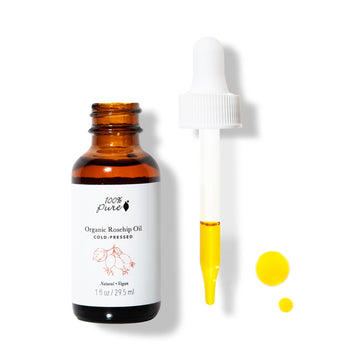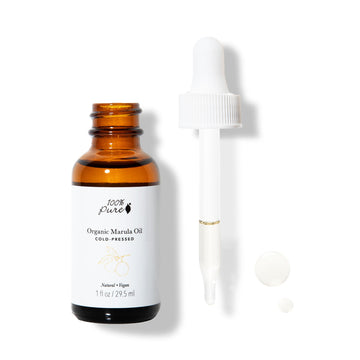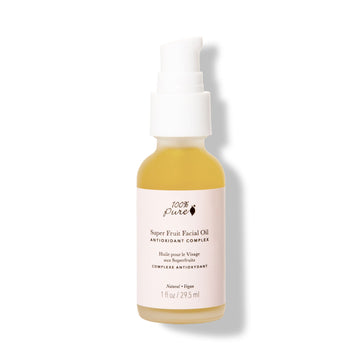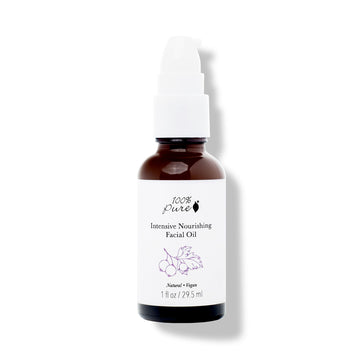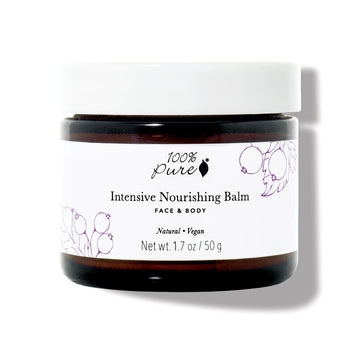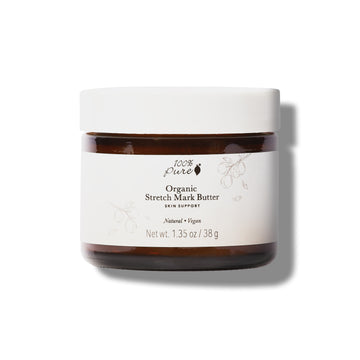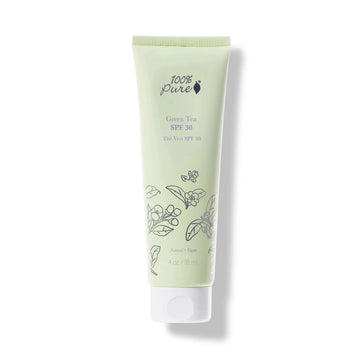Specific skin actives and ingredients to avoid while pregnant or nursing
Written by: 100% PURE®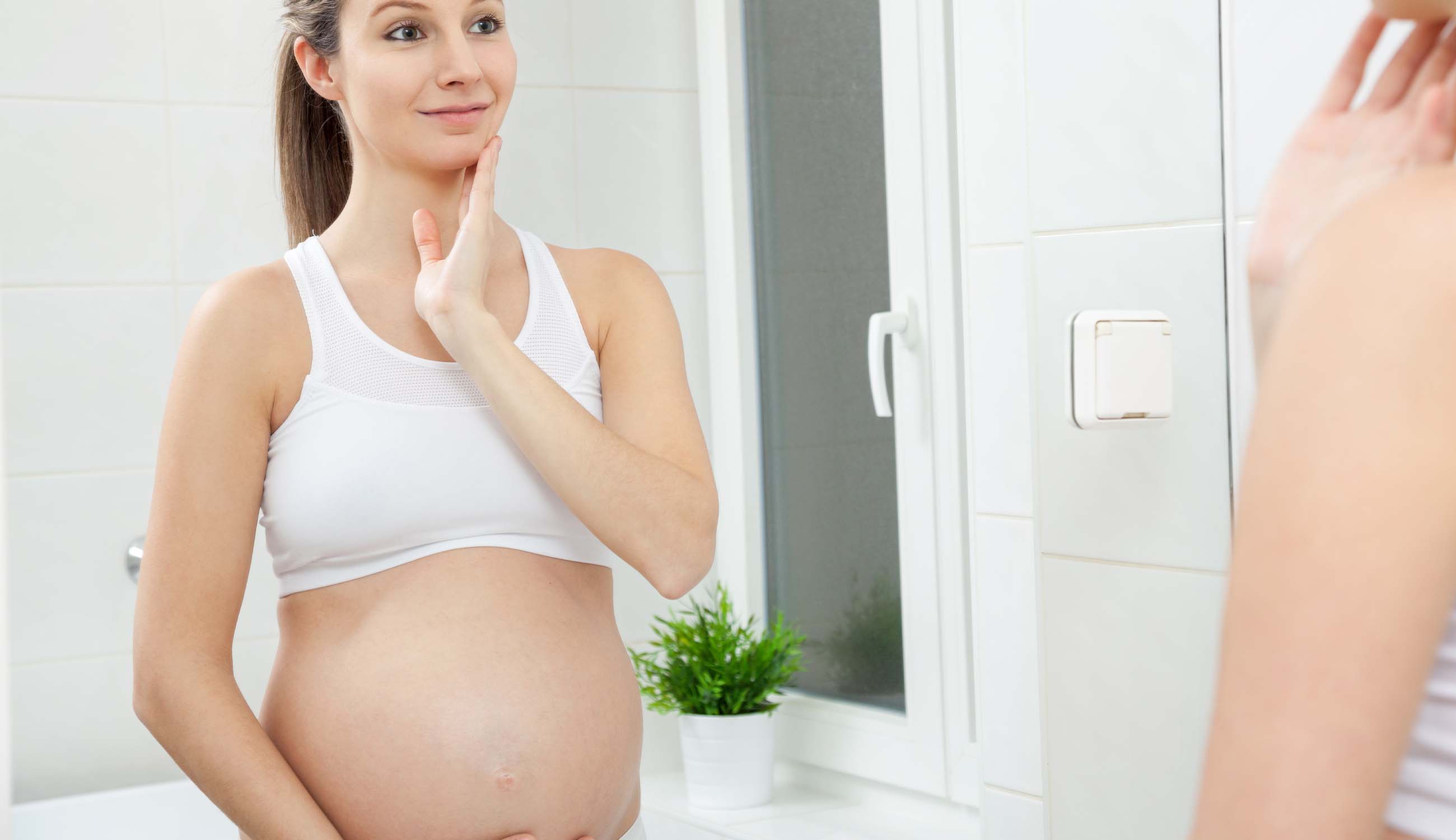
Motherhood changes our lives in a plethora of ways, and one of those ways is how we care for ourselves. As pregnant mothers and nursing moms, we must watch out for skin actives in our products that could be harmful to us and baby. Part of that is knowing how skin actives work, which to avoid, and how to make healthy skin care swaps to maintain the beauty of our largest organ and our well-being, too.
Quick backstory: what are skin actives? A skin active is the purpose of the product. It’s the action in the product that addresses the concern that we’re looking to remedy.
For example, any actively moisturizing ingredients in a lotion or face moisturizer would be the ‘skin actives’. Our skin being dry would be the skin care concern. In this case, the active ingredient as a hydrating component might be vitamin E or hyaluronic acid.
By this description, skin actives sound great. So, what’s the catch? When it comes to creating and sustaining new life, nutrients are super vital to proper nourishment and development.
Unfortunately, with many skin actives, the active ingredient can mimic important bodily functions ar even disrupt the body. Actives are usually derived from or linked to vitamins, which means as skin actives they can cause issues with absorption or hormone function. That can lead to problems for mama and baby.
Finding alternatives to many skin care products that are free of risky skin actives is an important part of motherhood. Luckily for us, there’s a pretty clear list of the skin actives that should be on pause.
Hydroquinone
A super powerful ingredient for addressing uneven complexion, hydroquinone is first on our list – but not for the reason you might think. Although the strength of this product would suggest that it’s harmful for baby, the reason that this one is a no-go is purely to do with the high absorption rate. Hovering above a third to sometimes nearly 50%, this is one that should definitely wait until mother’s milk is no longer on the table.
Essential Oils
Unfortunately, our beloved essential oils are skin actives to avoid while pregnant or nursing. Essential oils can be quite potent and stimulating. Some of them can cause reactions that affect our wombs, such as contractions.
Parabens
Most of us are now familiar with why parabens might not be the safest ingredient to expose our family to. Proven to be absorbed somewhat by the body, parabens are known to disrupt normal hormone function and can cause fertility issues.
Aluminum Chloride
If you’ve been putting off switching to a natural aluminum-free deodorant, here’s your chance. Aluminum chloride, often included in antiperspirant and deodorant, can be absorbed by the body in high quantities. Studies have drawn a link between this skin active and breast cancer. Limited exposure during nursing and pregnancy is recommended.

Retinol
Many of us saw this one coming. Retinoids are derived from vitamin A, which is a critical part of baby’s development. It’s a potent skin active which is known to be absorbed by the body when used. It’s safer to avoid this one while pregnant or nursing, as exposure to baby can cause impaired physical development.
Chemical Sunscreen
It’s natural for us to want to protect our skin from the elements, possibly even more so during pregnancy. In this case, a physical sunscreen is a better recommendation. The skin actives in chemical sunscreens – oxybenzone being a common ingredient – are being studied as possible hormone disruptors, which could put mama and baby at risk.
Benzoyl Peroxide and Salicylic Acid
These options address acne, breakouts, and blemishes, but are questionable in terms of safety. Where most professionals land is that in low concentrations (2% or lower), benzoyl peroxide and salicylic acid can be used while pregnant or nursing, but observing those limits is a must.
Newsletter Subscribe
for more blog updates and exclusive discounts
Now that we know where it’s safe to play, let’s trade some of our favorites with Mom’s Choice Product Selections (only temporarily!) to ensure we’re still taking proper care of our skin without any baby or mommy risks.
Making the swaps to eliminate or reduce our exposure to the previously mentioned skin actives will pay off in the long run. Once we’re safely postpartum, we can find ways to choose skin actives that address our usual skin care needs plus our postpartum skin concerns.
For Acne, choose these actives: Retinol, Salicylic Acid, Benzoyl Peroxide
Acne is something many women commonly get during pregnancy, which can leave us addressing it postpartum. While pimple patches and gentle cleansers during pregnancy and nursing are great options, we’re able to address acne concerns postpartum with a bit more gusto.
Seek treatments and cleansers with retinol to turn over skin faster and benzoyl peroxide to reduce breakout-causing bacteria. Choose salicylic acid to decrease redness, inflammation, and the frequency of breakouts.

For Complexion, choose these actives: Kojic Acid, AHAs, BHAs, and Vitamin C
Melasma and dark spots are another very common pregnancy side effect that can be hard to address without skin actives to help. Once it’s safe to do so, brightening products with vitamin C and skin acids can lead to major improvements in the skin. These will help with removing dead skin cells and skin cell turnover rate which pushes scars and blemishes away quicker.
For Pores and Oily Skin, choose these actives: Niacinamide, Retinol
Growing a whole human can definitely throw our skin for a loop. We can end up with oily skin where it had been normal or see an increase in enlarged pores. Postpartum skin care should include niacinamide to address oiliness in the skin – one of the best skin actives to achieve balance. Retinol can also help with clarified pores, resulting in smoother, tighter skin overall.
For Redness and Dry Skin, choose these actives: Hyaluronic Acid, Azelaic Acid, Vitamin E
When the skin becomes dry, it can exacerbate other issues we’re facing, like breakouts or fine lines. To avoid that postpartum, let’s introduce or reintroduce the skin to vitamin E for proper skin support and hyaluronic acid for deeper, lasting hydration. For redness, or even inflammation, azelaic acid is a fairly gentle option for frequent use.
- Tags: February-2022, Ingredients, Skin Care, skincare
We carefully hand-select products based on strict purity standards, and only recommend products we feel meet this criteria. 100% PURE™ may earn a small commission for products purchased through affiliate links.
The information in this article is for educational use, and not intended to substitute professional medical advice, diagnosis, or treatment and should not be used as such.


